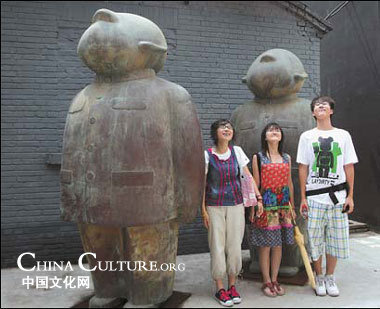State of the Art

In the 1990s, the factory began losing money and gradually stopped production.
The city planned to demolish the old factory at the end of 2005 and rebuild the district into a high-tech electronics zone. The Seven Star group would not only be able to then provide new jobs for its laid-off workers, but also get a new chance at business. In the meantime, the company just wanted to get some rent from the artists.
The artists were reluctant to eventually relinquish their art Eden and were determined not to give up without a fight.
In 2004, when Li Xiangqun, an established sculptor, was elected a deputy to the 12th People's Congress of Beijing, he submitted the first formal petition calling on the municipal government to save the art center.
The artists also organized numerous international art festivals and fashion shows to publicize their cause. In 2003, they organized "Rebuilding 798", "Blue Sky No Defense" and "Sino-German International Art Exhibition", each of which attracted thousands of visitors.
The conflict with the Seven Star group escalated.
In 2006, the 798 art district was finally listed by the Beijing municipal and Chaoyang district governments as a special "creative district and cultural park".
Not everyone is happy with the way the burgeoning art district has developed.
Zhu Jun, a 67-year-old architect who has rented a studio in 798, is disappointed with the current situation.
"The art district has really degenerated into an art theme park instead of a real Soho-like art district," he says. As the 798 district becomes better known, more people and organizations are trying to break into the area. The daily rent has tripled in three years and is now 2.5 yuan per sq m. Sometimes the price for subleasing might be as high as six yuan per sq m. Such a high rent has prevented many creative artists from moving in and most newcomers are now profit-minded individuals and art organizations.
"The district has become a fashionable spot with a fake art feel," Zhu complains. He claims that much of the artwork in the area is sold at unreasonably high prices to visitors.
Bernell thinks such change is "inevitable" and compared 798 with New York's Soho district, which has changed from an artist's haven to a prosperous art business center.
"One thing is certain: the change has begun and big art agencies and some famous brands will eventually replace individual artists here," Bernell says.
|

